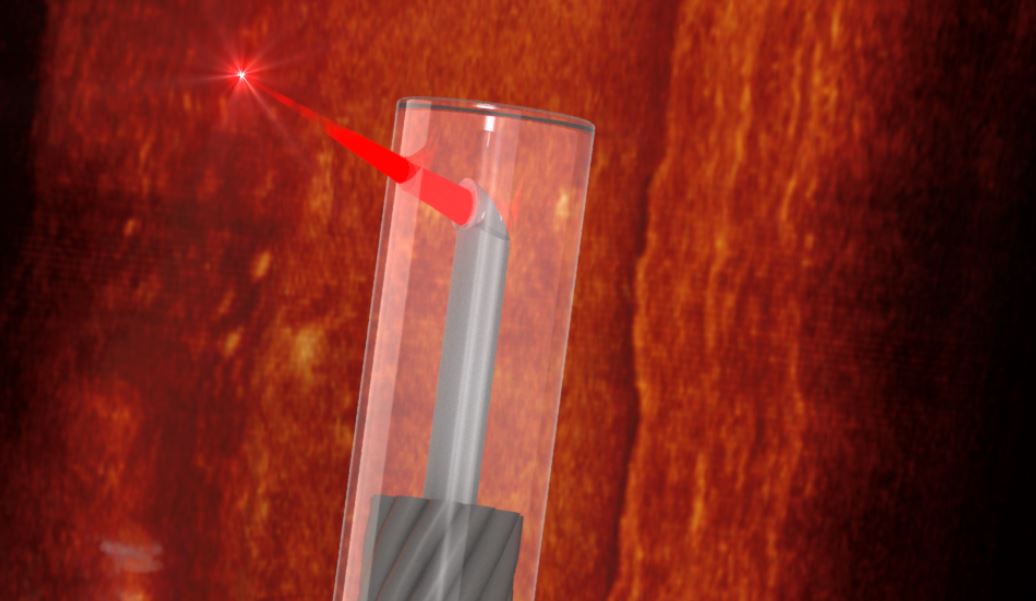News & Trends - MedTech & Diagnostics
World’s smallest imaging device to benefit patients with heart disease

MedTech News: An international team of researchers and engineers has developed the world’s tiniest device set to change the way we see human diseases.
A new study, published in the prestigious journal Light: Science & Applications, outlines how the team developed the world’s tiniest endoscope.
Lead author Dr Jiawen Li is an associate investigator and Heart Foundation Postdoctoral Fellow at the ARC Centre of Excellence for Nanoscale BioPhotonics (CNBP) at the University of Adelaide. She says, ultimately, the endoscope will help clinicians better understand the causes and progression of various diseases.
At the heart of the endoscope is a tiny 3D printed lens on the end of an optical fibre, as thin as a single human hair. With a protective catheter sheath, the entire device is less than half a millimetre wide. This means it can safely fit inside a narrow artery.
‘We used the technology to take 3D scans of atherosclerotic plaques inside blood vessel walls,’ Dr Li said. ‘These are a common cause of heart attacks.’
The images Dr Li and the team received were of a higher quality than what is possible from the fibre-optic tools currently used for preclinical and clinical cardiovascular disease diagnostics. And because the tool is so small, it’s less likely to cause any damage to the body.
While smaller endoscopes were always necessary for these diagnostics, the problem previously was how to make a smaller lens. It was next to impossible to create a hair-sized device with all the complicated optics inside, so the team turned to 3D microprinting.
‘To shrink it using traditional manufacturing methods caused a lot of problems with the blurring of images. They weren’t high quality,’ Dr Li said. ‘What’s nice with 3D microprinting is you can print whatever shape you want on such a tiny scale.’
Within the team are world leaders in 3D printing from the University of Stuttgart. They worked with Dr Li to print complicated lenses only a few hundred microns in diameter. The end result is not only a tiny endoscope but one that captures clear, sharp images.
In Australia 157 people are hospitalised every day due to heart attacks. Around one in 10 of these people are likely to be readmitted for a second one within a year. The endoscope can help detect and prevent these secondary heart attacks by assessing plaque in the arteries after the initial attack.
The CNBP team of engineers, physicists, cardiologists and biologists also hope the technology can help a wider range of patients by detecting other conditions such as lung cancer.
‘The endoscope can fit into the small branches of airways without causing damage,’ Dr Li said.
It could also help develop better drugs and treatments, or guide stents into arteries.
The next steps to move the tool past a proof of concept are further studies and to closely examine how diseases progress.
‘We want to give people the opportunity to receive the best treatment by helping doctors to see the disease more clearly,’ Dr Li said. ‘The technology could help save a patient’s life.’
News & Trends - MedTech & Diagnostics

Bariatric surgery trumps Novo Nordisk’s Wegovy in cost-effectiveness and durability
MedTech & Diagnostics News: Bariatric surgery emerges as cost-effective, boasting superior and enduring weight loss outcomes over a five-year span […]
MoreNews & Trends - Pharmaceuticals

Aussie digital health company hits new milestone in AstraZeneca partnership
Pharma News: Fewer than 50% of asthma patients adhere to their prescribed preventative medications. An Australian digital health company has […]
MoreDigital & Innovation

Medical drone to reduce health equity gaps in rural and remote Australia
A specialised medical drone which increases accessibility to essential health services such as pathology, medicines, and telehealth services in rural […]
More